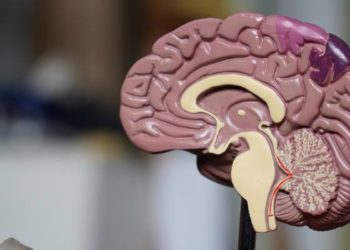2 Minute Medicine Rewind January 23, 2023
Association of Body Weight with Response to Vitamin D Supplementation and Metabolism
1. Among individuals with a higher body mass index, baseline vitamin D serum metabolite levels were lower compared to those with a lower body mass index.
2. A reduced efficacy of vitamin D supplementation was observed in individuals with a higher body mass index, which may be due to a blunted metabolism.
Evidence Rating Level: 2 (Good)
Vitamin D is an essential micronutrient and its relevance to various diseases such as rickets and osteomalacia is well established. New research suggests that vitamin D insufficiency may be linked to obesity and excess body weight. The Vitamin D and Omega-3 Trial (VITAL) was a completed randomized controlled trial that investigated the interactions between circulating total 25-hydroxyvitamin D (25-OHD) and obesity. A total of 16,515 adult participants free of cancer and cardiovascular disease at baseline were enrolled. These participants contributed baseline blood samples and reported their height and body weight on a questionnaire. Participants were then followed up after two years. In the original VITAL study, participants were randomized into two groups—the vitamin D supplementation group and the placebo group. The results of this cohort analysis showed that prior to randomization, serum total 25-OHD values were lower at higher BMI categories. However, following randomization, the intervention group who received vitamin D supplementation demonstrated an increase in total 25-OHD levels, but these increases were significantly lower in those with a higher BMI. This suggests that while vitamin D supplementation can increase vitamin-D-related serum biomarkers, there was a reduced response among individuals who were overweight at baseline. In conclusion, this study interestingly proposes a modified response to vitamin D supplementation and subsequent effects on health outcomes in individuals with a higher body-mass index. There are several limitations that should be noted. For instance, while the randomized nature of the study strengthened the validity of these results, certain factors such as adherence to study medication or loss to follow-up were not accounted for in the methodology. As well, the same amount of vitamin D supplementation was provided to all participants regardless of baseline BMI, but individuals of varying weights may have different vitamin requirements. Nevertheless, this post-hoc study of a large randomized clinical trial suggests that individuals of a higher weight may respond experience a blunted response to vitamin D supplementation. Further research into the mechanisms behind this phenomenon is warranted.
1. Patients with chronic obstructive pulmonary disease (COPD) had lower survival rates and greater healthcare costs compared to patients without COPD following inpatient elective surgery
Evidence Rating Level: 2 (Good)
Patients with chronic obstructive pulmonary disease (COPD) continue to have an increased risk of complications and worse outcomes following surgery, which poses significant challenges to our healthcare systems. This association may be multifactorial with baseline respiratory function, age, and the presence of other comorbidities influencing health outcomes. However, the exact impacts of COPD on the healthcare system and the survival of these patients following inpatient elective surgery are not known. As such, this retrospective cohort study aimed to compare survival and healthcare costs one year following inpatient elective surgery between patients with and without COPD. This study included 932,616 adult patients older than 35 years of age living in Ontario who underwent elective non-cardiac surgeries, without prior lung transplants or surgery for lung volume reduction. The diagnosis of COPD was made by physicians and required one or more ambulatory presentations or hospital admissions for COPD prior to their surgery date. The primary outcome of this study was all-cause death within one year following surgery and the secondary outcome was total healthcare costs. The results of this study showed that patients with COPD had an increased risk of all-cause death following surgery compared to those with no history of COPD (adjusted hazard ratio [aHR] 1.26, 95%CI 1.24-1.29). Additionally, compared with patients who did not have COPD, patients with COPD acquired increased healthcare costs during their hospital admissions and the year following their surgery. Ultimately, this study suggests that patients with COPD had lower survival rates and greater healthcare costs. Of note, individuals with COPD typically had concurrent comorbidities, other psychosocial issues, and frailty. There are several limitations that should be noted. For instance, this study did not include a measure of COPD severity when assessing outcomes following surgery. Nevertheless, as COPD is very prominent among patients undergoing inpatient elective surgery, the findings of this paper are very relevant to perioperative medicine.
1. Individuals with more severe acute COVID-19 illness and an unvaccinated status prior to infection were more likely to have symptoms one month following infection.
Evidence Rating Level: 2 (Good)
It is well known that COVID-19 infections can result in a wide range of acute outcomes from asymptomatic infection to hospitalization and even death. While new research on clinical presentations and information regarding new variants is regularly released, not much is known about persistent symptoms after several months of infection. This prospective cohort study aimed to investigate the long-term symptoms of COVID-19 and the effect of vaccination on this presentation. This study included 3663 adult participants from the US Military Health System with COVID-19 infection and receipt of a COVID-19 vaccine. All participants were sent surveys at 1, 3, 6, 9, and 12 months after symptom onset to summarize the status of the illness, the duration, and the prevalence of longer-term symptoms. The results of this study showed that 9.8% of participants reported having COVID-19-related symptoms 6 months following infection. Participants who were unvaccinated at the time of infection and reported a moderate or severe initial illness were more likely to report more than one month of symptoms (RR 1.39, 95%CI 1.04-1.85, and RR 2.25, 95%CI 1.80-2.81, respectively). Hospitalized patients had a higher risk of reporting symptoms for longer than a month than patients who were not hospitalized (RR 1.38, 95%CI 1.09-1.74). Commonly reported symptoms included headaches, fatigue, loss of sense of smell, difficulty breathing, and cough. This study conducted among Military Health System beneficiaries shows a greater risk of symptoms six months after COVID-19 infection in participants with more severe initial illness and unvaccinated individuals. There are several limitations to this study that should be noted. Firstly, this study recruited participants based on a voluntary basis in one specific population, specifically the US Military Health Systems. As such, these findings cannot be generalized to a broader population. As well, the self-reported nature of the symptoms through surveys may bias these results. Future multicenter studies with a more rigorous methodology can be informative.
1. In patients undergoing craniotomy, a laryngeal mask airway following extubation facilitated a safer and smoother emergence from anesthesia than those undergoing deep extubation.
Evidence Rating Level: 1 (Excellent)
In patients undergoing craniotomy, coughing following anesthesia can cause significant cardiorespiratory consequences such as laryngospasm, upper airway obstructions, and tachycardia. It is essential that appropriate anesthetics and intubation modalities are employed to reduce adverse effects within this population to ensure a smooth emergence from anesthesia post-surgery. Studies have suggested that the insertion of a laryngeal mask airway (LMA) following endotracheal extubation can contribute to a smoother emergence from anesthesia, which is known as the Bailey Maneuver. As such, this randomized controlled trial aimed to investigate whether Bailey Maneuver compared to standard extubation methods led to a safer and smoother emergence from anesthesia among patients undergoing craniotomy. This study included 62 adult participants without anticipated difficult airways and difficult LMA use, and with no prior contraindications to intubating an LMA. All participants had a three-minute pre-oxygenation period with similar inductions of anesthesia with fentanyl, propofol, and rocuronium. Oral intubation was performed, and anesthesia was maintained using sevoflurane. Participants were randomly assigned to either the deep extubation group or the LMA group, where the endotracheal tube was replaced by the LMA according to the Bailey Maneuver. The primary outcomes of this study included oxygen and carbon dioxide changes, as well as respiratory complications and hemodynamic changes. Respiratory complications included coughs, snores, oxygen desaturations, aspirations, and bronchospasms. This study showed that respiratory complications such as coughs and snores occurred more frequently in the deep extubation group. As well, more participants in the deep extubation group required more airway maneuvers such as a nasal airway or chin lifting. In conclusion, this study shows that early and smooth endotracheal extubation can be achieved by adhering to the Bailey Maneuver for patients undergoing craniotomy. Further research regarding the use of Bailey Maneuver among different population groups and multicenter sites can determine its application to clinical practice broadly.
Association of Eating and Sleeping Intervals with Weight Change Over Time: The Daily24 Cohort
1. Time-restricted eating was not an effective strategy for long-term weight loss in a general medical population.
Evidence Rating Level: 2 (Good)
Countless studies and ongoing research have depicted obesity and being overweight as significant modifiable chronic disease risk factors. Measures promoting healthier diets and new exercise programs are continuing to be developed to help curb obesity within the United States. Interestingly, recent research has shown that time-restricted eating patterns may have an association with changes in weight over time. As such, this prospective cohort study aimed to evaluate the association between time from the first to last meal with changes in weight over time. This study included 1017 adult participants with at least one weight and height value documented in the electronic health record, from a variety of healthcare networks in the United States. The study team designed an app known as the Daily24, which participants could use to record timing of waking up, sleeping, and each eating occasion within a 24-hour window. Participants could also record additional information such as sizes of meals and indicate sleep duration. Using sleep and eating occasions, the study authors were able to calculate the duration between the first and last meal. The results of this study showed that consuming a total daily number of larger meals was associated with an increased weight gain compared to consuming a total number of small meals. However, no difference with time-restricted eating was seen with regards to impact on weight loss over the study period. In conclusion, while the total number of daily meals was associated with an increased weight change, these findings do not support employing a time-restricted eating strategy to promote weight loss. Some limitations of this study should be considered when interpreting these findings. Firstly, this study required an adequate use of the Daily24 mobile application; however, depending on the participant’s education level and age, the use of this app regularly may be challenging. As well, the effect of accidental weight loss through illness or other comorbidities could not be assessed, which may have potentially biased these results. Nevertheless, further research investigating eating intervals and their relationship to weight loss, while taking these methodological limitations into consideration should be conducted.
Image: PD
©2023 2 Minute Medicine, Inc. All rights reserved. No works may be reproduced without expressed written consent from 2 Minute Medicine, Inc. Inquire about licensing here. No article should be construed as medical advice and is not intended as such by the authors or by 2 Minute Medicine, Inc.







